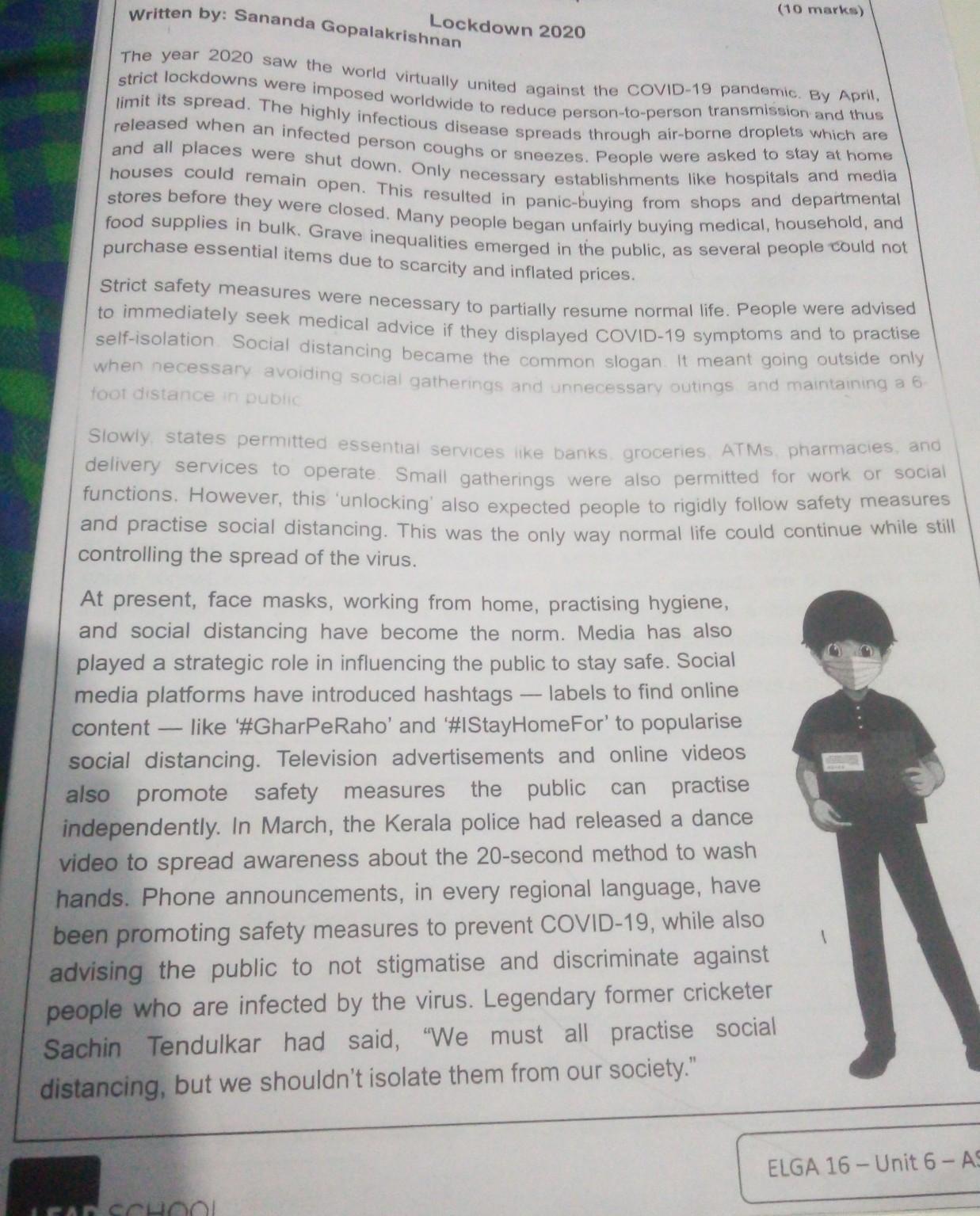write an opinion article based on the passage ‘Lockdown 2020’

Answers 2
On the evening of 24 March 2020, the Government of India ordered a nationwide lockdown for 21 days, limiting movement of the entire 1.38 billion (138 crore) population of India as a preventive measure against the COVID-19 pandemic in India.[1] It was ordered after a 14-hour voluntary public curfew on 22 March, followed by enforcement of a series of regulations in the countries' COVID-19 affected regions.[2][3] The lockdown was placed when the number of confirmed positive coronavirus cases in India was approximately 500.[1] Upon its announcement, a mass movement people across the country was described as the largest since the partition of India in 1947.[4] Observers stated that the lockdown had slowed the growth rate of the pandemic by 6 April to a rate of doubling every six days,[5] and by 18 April, to a rate of doubling every eight days.[6] As the end of the first lockdown period approached, state governments and other advisory committees recommended extending the lockdown.[7] The governments of Odisha and Punjab extended the state lockdowns to 1 May.[8] Maharashtra, Karnataka, West Bengal and Telangana followed suit.[9][10] On 14 April, Prime minister Narendra Modi extended the nationwide lockdown until 3 May, on written recommendation of governors and lieutenant governors of all the states, with a conditional relaxations after 20 April for the regions where the spread had been contained or was minimal.[11]
-
Author:
princessxmhh
-
Rate an answer:
0
Answer:
that is your answer you only find the answer
-
Author:
iglesiasccpr
-
Rate an answer:
0

